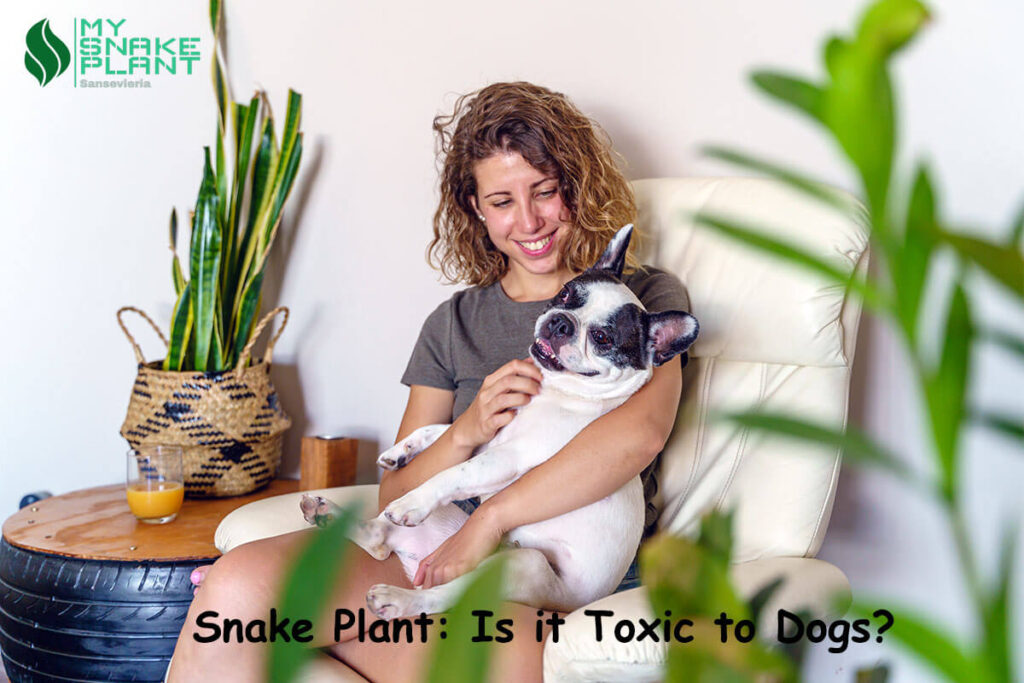Introduction to Snake Plants
Humans are social beings. They like to have some sort of companion at all times. Sometimes it’s people, sometimes it’s an animal, and some other times it might even be a plant. Dogs are one of the oldest friends of mankind. They are loyal, funny, and very helpful. Then, there are plants. Ever walked into a home or office and noticed a tall, striking plant with sword-like leaves? That’s probably a snake plant. While they’re a favorite for many homeowners due to their low maintenance and air-purifying qualities, there’s a pressing question for pet owners: Is the snake plant toxic to pets, particularly to dogs? Is a snake plant pet-friendly? Let’s dive in.
What is a Snake Plant?
The snake plant, scientifically known as Sansevieria, is a popular indoor plant native to West Africa. It’s known for its upright, sword-like leaves and its ability to thrive in low light conditions. Sansevieria can endure many hardships and only needs to be watered very rarely, that is, every fortnight. So, is snake plant bad for dogs? Is a snake plant toxic to dogs? You will need to be a bit more patient before you find out the answer.
Popular Varieties of Snake Plants
The snake plant, also known as Dracaena trifasciata, is not just popular for its resilience but also for its unique appearance. Its long, succulent, grass-like foliage often bears unique striping or varied tones, reminiscent of snake markings. This resemblance is one of the reasons behind its name. The plant’s aesthetic appeal combined with its hardy nature makes it a favorite among houseplant enthusiasts.
There are several varieties of snake plants, which share many of their features, including the Sansevieria trifasciata ‘Laurentii’, Sansevieria cylindrica, and Sansevieria hahnii. Each has its unique appearance but shares the same basic care requirements.
- Sansevieria trifasciata ‘Laurentii’: It is different from the common variation in the sense that the common variation, called Sansevieria trifasciata, is without ‘Laurentii’ or yellow leaves.
- Sansevieria cylindrica: This variety has a more unique appearance. Some argue that it rather looks more like a spear than a sword. But don’t let its appearance deceive you, for it’s more sensitive to some conditions compared to the common variety.
- Sansevieria hahnii: If you are expecting to witness another weapon, you will be disappointed. However, it doesn’t mean that Sansevieria hahnii isn’t a beautiful sight to behold. Unlike our spear-like friend, Sansevieria hahnii isn’t as sensitive, particularly in the care needed for light.
Having talked about some of the varieties of snake plants and their family, it brings us to the question: Are snake plants safe for pets? can a snake plant kill a dog? Read the next sections to find out your answer.
The Toxicity Factor
When it comes to plants, you can find different chemicals in different ones, especially when looking at different plants from different families. When it comes to Sansevieria and all of its many family members, they all share a striking resemblance, although they look like different weapons. They all have the same chemical called saponins. Now, I think it’s a good time to take a look at the questions: Are snake plants safe for dogs? Or is a snake plant poisonous to dogs?
Is Snake Plant Toxic to Dogs?
To briefly answer the question, yes: snake plants aren’t pet-safe, none of them. The toxicity factor which we explained in the last part, saponins, is at the root of all the problems. Take a look at the next sections to find out how this one chemical works its way into poisoning your dog and what its symptoms are.
Chemicals Present in Snake Plants
Snake plants contain a chemical compound called saponins. Saponins have been traditionally used in medicine, and it is still being used as it has many useful biological effects such as it being: antioxidant, anticancer, antimicrobial, antiviral, etc. Although saponins have an anti-inflammatory effect on humans, it has the exact opposite effect on pets.
Detailed Toxicity Explanation
While we’ve touched upon the toxicity of snake plants, it’s essential to understand the degree of this toxicity. Snake plants are said to be mildly toxic to dogs. The primary culprit behind this toxicity, as we’ve explained earlier, is saponins which are present in all varieties. These compounds can cause hypersalivation, dilated pupils, and gastrointestinal distress in dogs. The severity of the symptoms often correlates with the amount ingested. Small quantities might result in milder symptoms, while larger amounts can lead to more severe reactions.

How Snake Plants Affect Dogs
When a dog chews or ingests parts of a snake plant, the saponins can cause discomfort. While not deadly, it’s certainly something pet owners should be aware of. The saponins are found in the leaves of the plant. So, if your dog should ingest the roots; hypothetically, it should be safe. In any case, you should still look out for symptoms.
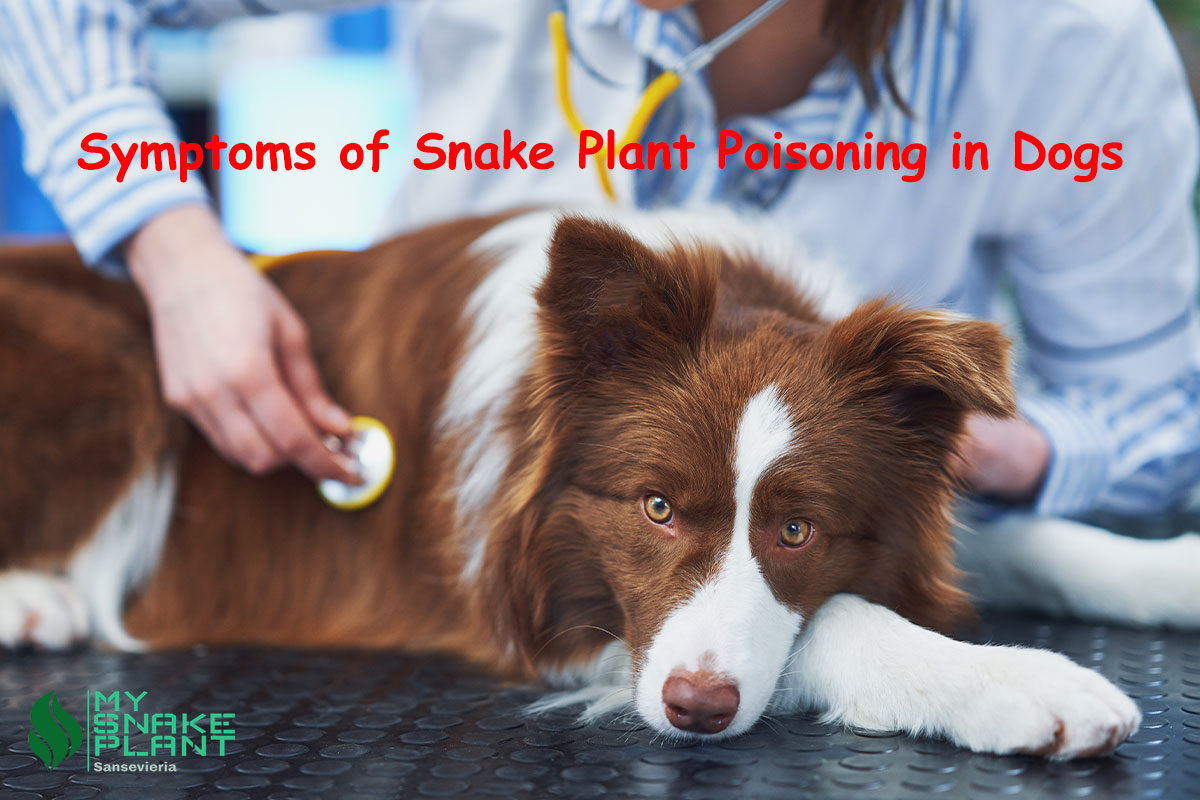
Symptoms of Snake Plant Poisoning in Dogs
Every poisonous chemical has certain symptoms. Some of the said effects might be temporary and disappear soon, and some of them might last for a longer time. In many cases, the intensity of these symptoms is directly related to the amount of poisonous chemicals ingested.
Immediate Symptoms
If your dog has ingested snake plants, there are several possible symptoms that can appear within 30 minutes to several hours after ingestion.
Nausea and Vomiting: As I said earlier, while saponins has an anti-inflammation effect when digested by humans, it does the exact opposite when digested by dogs. Cats are similar to dogs in this aspect; they will have the same problem should they ingest saponins.
Difficulty Breathing: This is one of the less common symptoms as it does not happen in all dogs. However, it has been reported in cases. The other symptoms, whether immediate or long-term effect, are not a cause for worry in a life-threatening manner. If you notice this symptom in your dog, it’s suggested to take it to a vet immediately; and if you don’t know the variety of the plant, either take a part of it or a picture of eat to show the vet.
Long-term Effects
While rare, prolonged exposure or large amounts ingested can lead to more severe symptoms which can last a lot longer than other ones. The amount ingested and exposure time may vary from dog to dog and from one variety of Sansevieria plant to another.
Behavioral Changes: When under the effect of saponins, your dog isn’t quite feeling like usual. Naturally, you might notice him or her acting differently than usual. If you notice any changes in your dog’s behavior, you’d better take action immediately.
Lethargy: If you have eaten something that didn’t agree with you, then you might have also felt some of the said symptoms, and in addition to them, lethargy. Lethargy is the state your body doesn’t have the energy to spare for other activities such as jumping around and playing. After all, it needs all of its energy to fight off the poisonous chemical which has entered the body.
If you are puzzled about what to do if your dog eats a snake plant, take a look at the next part.
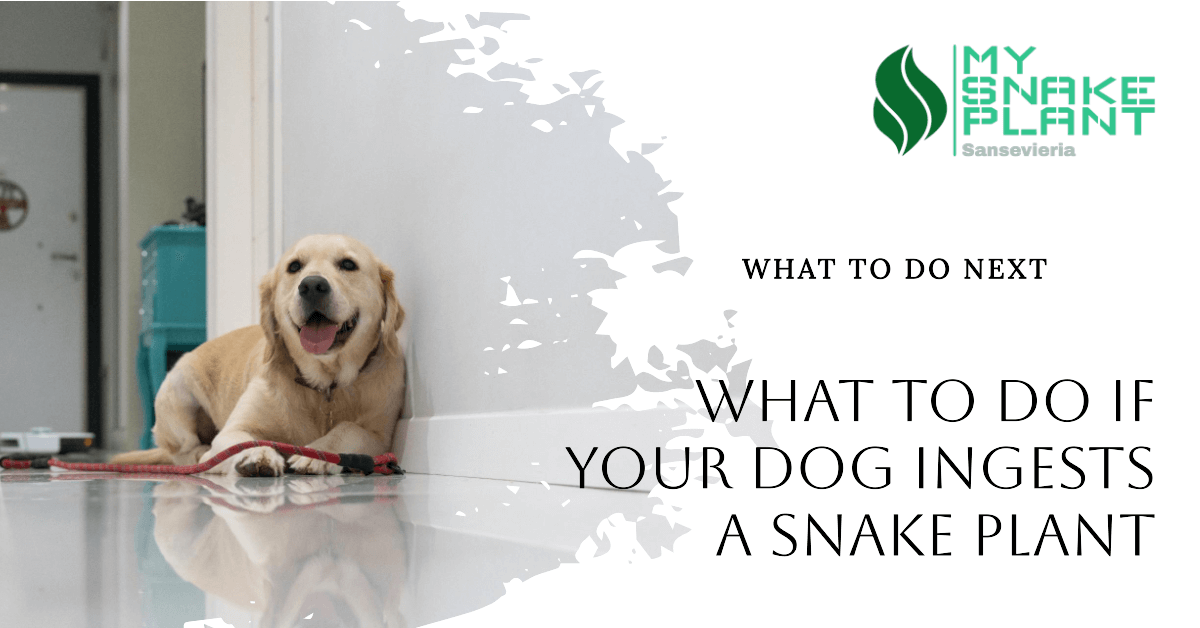
What to Do If Your Dog Ingests a Snake Plant
If your dog has ingested saponins, there are certain measures you need to take to ensure he or she is not in any danger and is on their way to recovery.
Immediate Actions
First, don’t panic. In order to make the best decisions, you need to keep calm. Remove any plant material from your dog’s mouth and provide fresh water. Monitor your dog for any of the symptoms mentioned above. Also, take a look at what’s left of the plant. You should have some idea of the amount that is missing. If it amounts to something, you might want to keep a closer eye on the dog or take more serious measures. Keep in mind that if you found yourself in the said situation, the best course of action you can take is those instructed to you by a vet. Refrain from inducing vomiting or feeding your any chemicals unless explicitly instructed to do so by the vet.
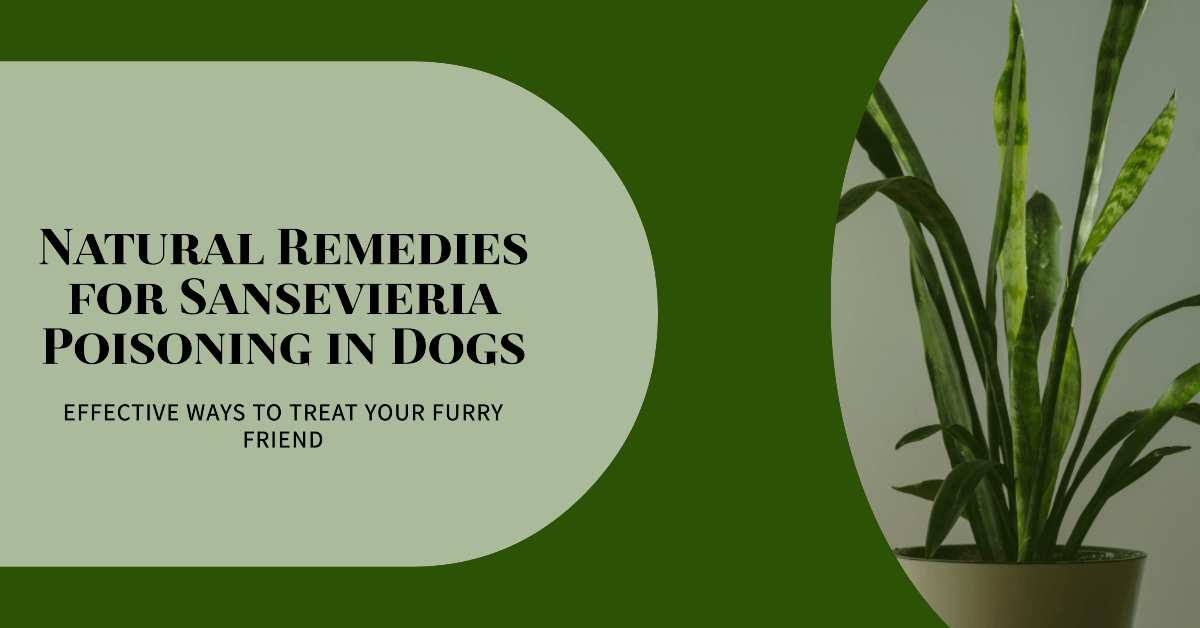
Treating Snake Plant Poisoning
Before we go on, please keep in mind that it’s always in your dog’s best interest to visit a veterinarian and consult them for advice. However, taking into account that, sometimes it may be crucial to act upon the matter, it’s better you know about these steps.
- Try to induce Vomiting: to do so, one of the most successful ways is to feed the dog, using a syringe for getting it done easier, or if other ways fail, a solution of hydrogen peroxide. The purity of this solution should be %3. Remember, although this method is one of the bests, you shouldn’t decide whether you should do it or not on your own.
- Provide fluids intravenously: Try giving some water to your dogs in 30 minutes intervals. It helps the dog’s body deal with the poison better on its own. Additionally, it can help prevent some problems and symptoms that tend to occur after the initial symptoms.
- Administer antihistamines: Many professionals consider it safe to use Benadryl. However, it should be administered in certain dosages. For more details, talk to a vet about the required dosage for your dog in the case of an emergency.
When to Visit the Vet
If symptoms persist or if your dog ingested a large amount of the plant, it’s best to consult with a veterinarian immediately. Keep in mind to take note of the ingested amount (how much of the plant you assume your dog ate) and the variety and to report them to the vet.
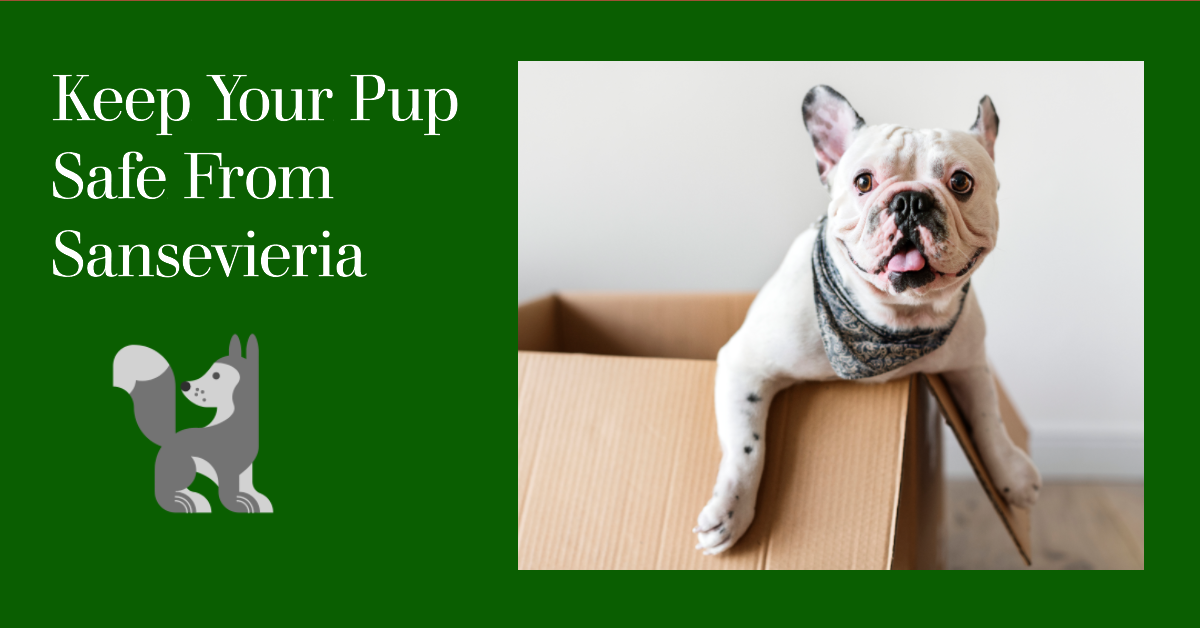
Preventing Snake Plant Poisoning in Dogs
You wouldn’t need to worry about your dog’s health or what to do when he or she ate some of the plants if you can prevent it from happening in the first place. Luckily for you, there are two approaches that come to mind here.
Safe Placement of Plants
Ensure that your snake plant is placed in an area inaccessible to your dog. High shelves or rooms that your dog can’t enter are ideal. There are, however, places that are out of the question. First of all, take note of what condition each variety of Sansevieria plant needs to grow. This will limit your options. Then keep in mind that places such as bathrooms are a big no due to their humidity and the plant’s sensitivity to it.
Alternative Non-Toxic Plants for Homes with Dogs
Not all the plants are toxic to dogs. You need not ignore your love for having greenery around the house if you decide to choose something non-toxic to dogs instead of Sansevieria. For those who love the look and feel of snake plants but are wary of their toxicity, there are several non-toxic alternatives to consider:
- Cast Iron Plant: This plant has sword-like foliage similar to snake plants and thrives in low-to-medium light. It’s as resilient as the snake plant and poses no threat to dogs.
- Ponytail Palm: It is easily recognizable thanks to its round, large trunks and cascading grass-like foliage, this plant can endure many hardships and is drought-tolerant and requires minimal care.
- Spider Plant: With its grass-like, spiky foliage, spider plants are a popular non-toxic alternative. Their yellow and green striped leaves bear a resemblance to snake plants. They are also known for their unique spider-like offshoots.
- Zebra Calathea: This plant stands out with its zebra-like striped foliage. It can grow up to two to three feet tall and is a visually appealing replacement for snake plants.
Conclusion
For a very long time, dogs have always been a loyal friend of humans. On the other hand, there are snake plants which are a beautiful addition to any home. Considering that snake plants are toxic to dogs, dog owners should exercise caution if they want to have both of them around. By understanding the risks and taking preventive measures, you can ensure a safe environment for your furry friend.
FAQs
- Are all varieties of snake plants toxic to dogs?
- Yes, all varieties contain saponins which can be harmful when ingested by dogs. Remember that, this might not be limited to snake plants only. There might be other plants out there with saponins, and thus, have a more or less similar poisoning effect.
- How long after ingestion do symptoms appear?
- It is believed that symptoms can appear any time within 30 minutes after the ingestion to several hours. The variety of plants, the amount ingested, and the health of your dog are all other items that can modify this time and its duration.
- Are there any long-term effects on dogs after ingesting snake plants?
- In most cases, no. But if a dog ingests large amounts, it could lead to more severe symptoms. Sometimes, it can have a long-lasting effect if it’s not addressed early, and it is not solved on its own.
- Can cats get poisoned by snake plants too?
- Yes, cats can also experience symptoms if they ingest snake plants. The chemical behind their problems is also saponins. Cats also experience similar symptoms, and these symptoms usually last for the same time. Please consult a professional for more information.
- How can I make my home safe for my dog?
- Place toxic plants out of reach, consider non-toxic plants, and always monitor your dog’s behavior around plants. If you must have a toxic plant around, learn all the cautionary steps.
- My dog ate a snake plant, what should I do?
- You can take a look around the article as we have tried to explain to the best of our abilities the different courses of action you can take and what you should do if such a situation happens. The best course of action is to keep calm and visit a vet.


